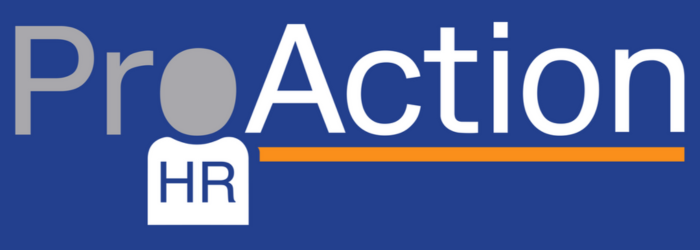As 2023 approaches, how can SMEs remain competitive recruiters?
The continued high level of vacancies in the UK and the ongoing shift to permanent hybrid and remote working models continue to be a challenge for recruiting new staff.
By 2030, there will be a global human talent shortage of more than 85 million people, according to a recent Korn Ferry report. And, although there has been a slight dip in job vacancy according to latest ONS stats in the UK, 13 of the 18 industry sectors have seen record vacancy highs in recent months.
This means it continues to be a candidate driven market, and perhaps with the rising cost of living, many will choose to remain with their current employer for stability so less candidates to choose from. On the flip side, potentially, many will be looking to move to a job that pays them more to help offset their increased financial commitments.
The impact of the pandemic, and the ongoing war in Ukraine have created new mindsets for many but undoubtedly, we are in uncertain times. That is why it’s crucial to consider a whole range of elements when it comes to recruiting. Here’s some considerations if you are looking to recruit as we rapidly head towards the end of the year:
Recruitment needs to be a positive experience at every step
Recruitment is often seen as a one-off task. You offer the job to the best candidate; they say yes and that’s the task complete. All too often we see the ‘recruitment’ process stop at the job offer, but actually a very large part of building loyalty, trust, and confidence in your business as somewhere that any new starters want to stay working is in fact right from their initial application experience all the way through the onboarding process.
Before you even begin the process, take a different viewpoint this time, as it will set you in good stead for any future recruiting that you do.
If you don’t get these aspects right, you could be missing out on the best talent as there are many companies who do choose to invest in offering a great candidate experience.
Don’t dismiss the importance of following up with all applicants as they are removed from your recruitment process. We would advise that you don’t leave any notifications until after you’ve received the acceptance from the successful candidate.
Remember to focus on offering a positive candidate experience to all those that apply. It’s all too easy to get bad feedback from disgruntled applicants on social and review platforms, which can negatively impact on future candidates and their perception of you as an employer.
We cover reputation building in a lot more detail within our article, How Important is Employer Branding?
The first 3 months are critical
The risk of losing people is highest in the first three months, particularly in a hybrid/remote working model. And that leaves you right back at the start of the recruitment process again, potentially short on staff with the knock-on effect that has on your business productivity and ultimately the impact for your customers.
Too many SMEs don’t put any real tangible value into welcoming new starters into the business and giving them a positive and inclusive induction into their new role. Here are some key areas where the experience can go from mediocre to memorable (for all the right reasons):
Have an induction process so that new staff quickly feel part of the team.
Include time with key members of management so they can start to develop relationships with those they will work most closely with.
Make sure their workspace has all they need to get started – sounds basic but it does make a (positive) difference.
Provide relevant information for them to reference and learn about the business.
Announce to the rest of the company and welcome them – so everyone knows who they are.
Efficient recruitment processes are a key differentiator
Recruiting can mean a drop in productivity and added pressure for you, your staff and it can take months not weeks to successfully get someone into the role and fully up to speed.
For many SME’s, recruitment can be a real resource drain as management are pulled away to focus on the time intensive aspects of recruiting. Plus, the longer it takes to recruit to fill a role, the longer the role must be covered by someone else who has their own full workload already. These can combine to mean a drop in productivity and added pressure for your staff.
However, gone are the days of taking time to recruit – too long, too little by way of communication and action, and that perfect candidate will most definitely get snapped up by the competition! Do you have a defined applicant – interview – offer process? If not, your competition will beat you to recruit that candidate who could be right for you.
For lots of SME organisations, many aspects of HR, not just recruitment, are managed in a reactive way and only at a time when it really needs to happen because there is no other choice to take, rather than action being taken to facilitate the change in a structured and proactive way. We advocate a 3-step method to ACT (Assess, Create, Transact) as opposed to reacting to HR related challenges within your business.
By putting some simple processes in place, you can easily streamline your recruitment and shorten that critical time it takes to recruit. Here’s some ideas on how to have a more planned approach when you need to hire:
A good advert designed to attract the right type of candidate – taking the time to do this will avoid having to respond to a slew of unsuitable applicants. It should sell the role to those you wish to attract, not be a condensed version of a job description.
Develop a spreadsheet or app to manage applications.
If you can add a form to your website that connects to and automatically populates Google Docs or similar – this can save masses of time. If you can have a dedicated Work for Us page on your website which hosts the form, even better because you can dedicate this page to really promote the business as a great place to work.
Standard email templates for rejections, candidates to be invited for interview etc.
A Calendly or other scheduling tool link to make booking time in your diary a much quicker process.
A list of standard questions for all interviews.
Book out a day for interviews so that you can be fully in the zone and focused on meeting potential candidates.
Consider Zoom or Teams instead for initial first round interviews for better time efficiency and save the face-to-face format for your final candidate shortlist.
Again, book out a block of time to do these shortlist ones in the same day and so you have each individual fresh in your mind for comparison.
Book time out to review and make a decision within 48 hours.
Consider subscribing to an Applicant Tracking System (ATS), as these can do much of the above for you on autopilot, and for a very low cost. Hireful is one such option – discover more.
You need to take a different approach to candidate attraction
The perfect candidate is not one single application away.
Consider the essential skills needed for the role?
Are you advertising in the right places?
What makes you attractive as an employer?
If you require a specific range of skills, have you looked directly at how those industry skills are affected by Covid and identified if there are transferable skills that could work with you?
Have you encouraged or incentivised your current staff to talk about your business and find friends and family looking for work?
Summary
With a little planning and preparation, you can introduce a recruitment process that can scale with your business and ensure you don’t just successfully and efficiently recruit in these challenging times but also retain those staff who do join you.
If you would like to discuss any aspect of the suggestions in this article and how to implement them, please get in touch. Book a discovery call
1 Taken from The Leadership Training Market, Updated Nov. 20, 2020

